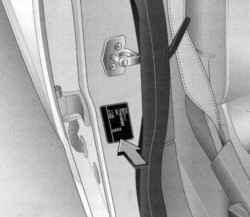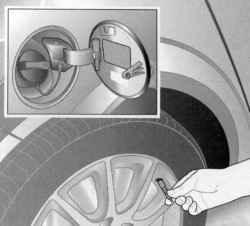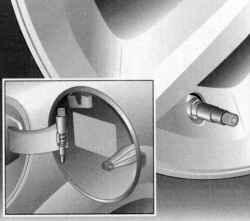
4 minute read
Installation of new tires
1. Ball joints in a case put the luggage in the cargo box and fasten the mounting strap. 2. Ball joints put in the luggage compartment in the recess for the spare wheel. Fasten it in the compartment fastening straps.
Trailed load
Permitted trailer load values depend on the type of car and engine, and the excess is prohibited. Trailed load - is the difference between the actual total weight of the trailer and the actual bearing load suspended on a condition. Therefore, to test the trailer load on the scales set only wheels of the trailer, not the nose wheel. The values of permissible trailer load recorded in the documents of the car. In the absence of a special account value permissible trailer load applied to the gradient less than 12%. Run the car with a full trailer load should be permissible only to drivers who have sufficient experience in the towing of large or heavy trailers. Permitted trailer load values are valid only for these rises at an altitude of 1000 meters above sea level. Because of the thinness of air at higher altitude decreases the engine power and reduced gradeability, permissible trailer load decreases by 10% for each additional 1000 m ascent. When traveling on roads with a slight slope (less than 8%, for example on motorways) to reduce the trailing load is not necessary.
Fig. 1.1. Location type plate
The actual trailer loads and total mass of the towing vehicle together must not exceed the permissible total weight of the train. If a permissible total weight is used in full trailer load can only be used to achieve the permissible total train weight. Permissible total train weight is specified on the type plate (see Fig. 1.1).
Bearing load
Bearing load is a load of pressure on the trailer coupling support. This force can be controlled through weight distribution when loading the trailer. The maximum allowable bearing load (75 kg) car towing listed on the label with trailer coupling and the documentation of the car. Not be supporting the load of less than 25 kg. The measurements of the reference load set pole trailer loaded to the altitude where it will be after the accession to the trailer loaded car. This is especially important for trailers with a double axle.
The load on the rear axle while driving with a trailer
When the associated trailer and fully loaded car, truck, including the weight of all passengers, rear axle load must not exceed the permissible load (see the relevant data on the type plate or in the documentation of the car) for a model of «Limousine» of 65 kg and the permissible total mass - 45 kg. For the model «Caravan» can not exceed the permissible rear axle load of 60 kg, and the permissible total weight - 30 kg. If the permissible rear axle load is exceeded, then the maximum speed should not exceed 100 km / h. If a country has set a lower speed when operating with a trailer, you should observe these rules.
Tires are in pairs, more complete set. At one bridge put tires of equal size, design, one manufacturer and with the same tread pattern. Tires with a prescribed direction of rotation mount such a way that they were rolling in the direction of the car. The direction of rotation is shown with an asterisk (eg, arrow) on the sidewall of the tire.
Mounted rearward tires (for example, by changing the wheels) as soon as possible remount. Only in this way ensures optimal use of performance tires. Some tires have a surrounding rim of thickening, designed to protect alloy rims from damage. Using caps wheels on steel wheels with tires having a protective thickening should observe the following conditions: - Use the shields of the wheels and tires, admitted to the use by Opel and meet all the requirements of the relevant combinations of wheels and tires. - In the case of caps of the wheels and tires, not admitted by Opel, the tires should not be protective thickenings.
NOTE The use of unsuitable tires or wheels caps may lead to a sudden drop in pressure and, consequently, to the accident.
Tire pressure
Check pressure at least once in 14 days and before every long trip on cold tires. Do not forget to check the spare tire.

Fig. 1.238. Location puller lid
valves
To facilitate untwisting valve covers use a special puller. It is located on the inner side of the filling hatches (Fig. 1.238).

Fig. 1.239. Location puller with adapters to install a manometer
The vehicles with the system of monitoring tire pressure in the lifter to valve caps have an adapter. Before installing the pressure gauge to check pressure wound adapter to valve (Fig. 1.239) The pressure increased due to heating of tires, can not be reset, or cooling, it could fall below the minimum value.










